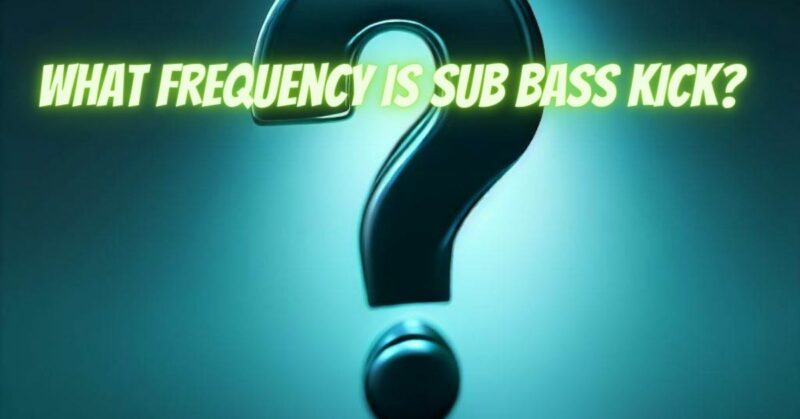In the world of music production and audio engineering, understanding the frequency of a sub bass kick is essential for crafting powerful and impactful low-end elements in a track. The sub bass kick, often referred to as the “thump” or “boom” in electronic and hip-hop genres, resides in a specific frequency range that contributes to the foundation and energy of a song. In this article, we’ll explore the frequency of sub bass kicks, how it influences music, and how to harness its potential for your audio creations.
The Sub Bass Kick Frequency Range
The sub bass kick primarily occupies the ultra-low-frequency range, typically spanning from 20 Hz to 60 Hz. This is the region where you feel the low-end thump rather than hear it distinctly. The frequencies below 40 Hz, in particular, are often felt as vibrations in your body when listening through a powerful sound system.
Importance of Sub Bass Kicks
Sub bass kicks serve several essential roles in music production:
- Foundation: Sub bass kicks provide the foundational support for a track. They establish the rhythm and groove, setting the stage for other musical elements to build upon.
- Emotional Impact: The physical sensation of sub bass frequencies can create a visceral, emotional response in listeners. A well-timed sub bass kick can evoke feelings of excitement, anticipation, and energy.
- Genre Identity: Sub bass kicks are a hallmark of many music genres, including electronic dance music (EDM), hip-hop, and dubstep. They help define the genre’s signature sound and style.
- Energy and Movement: Sub bass kicks contribute to the sense of movement and drive in a song. They add a sense of power and momentum that propels the music forward.
Crafting the Perfect Sub Bass Kick
To create a sub bass kick that hits the sweet spot in terms of frequency and impact, consider the following techniques:
- Use a Subtractive Approach: Start with a clean, low-frequency sine wave oscillator in your synthesizer. This ensures a pure, focused sub bass tone without unnecessary harmonics.
- Fine-Tune the Frequency: Experiment with the frequency of your sub bass kick within the 20 Hz to 60 Hz range. The exact frequency will depend on your track’s key and the specific musical context.
- Layering: Layer your sub bass kick with a midrange kick drum or percussion element to add punch and definition. The combination of the sub bass thump and the midrange kick’s attack can create a balanced and impactful sound.
- Sidechain Compression: Use sidechain compression to duck the sub bass when other elements, such as vocals or synths, are playing. This technique prevents clashing frequencies and ensures a clean mix.
- Monitoring and Testing: Listen to your sub bass kick on a high-quality sound system or headphones that can accurately reproduce low frequencies. Make adjustments as needed to achieve the desired impact.
- Reference Tracks: Compare your sub bass kick to professionally produced tracks in your genre. Analyze how they use sub bass to achieve a similar impact and adjust your sound accordingly.
The frequency of a sub bass kick is a critical element in music production, shaping the low-end energy and groove of a track. By understanding the frequency range it occupies and how it influences music, you can create sub bass kicks that provide a solid foundation, emotional impact, and genre-defining characteristics in your audio productions. Experimentation, careful monitoring, and attention to detail will help you craft sub bass kicks that resonate with your listeners and elevate your music to new heights.


